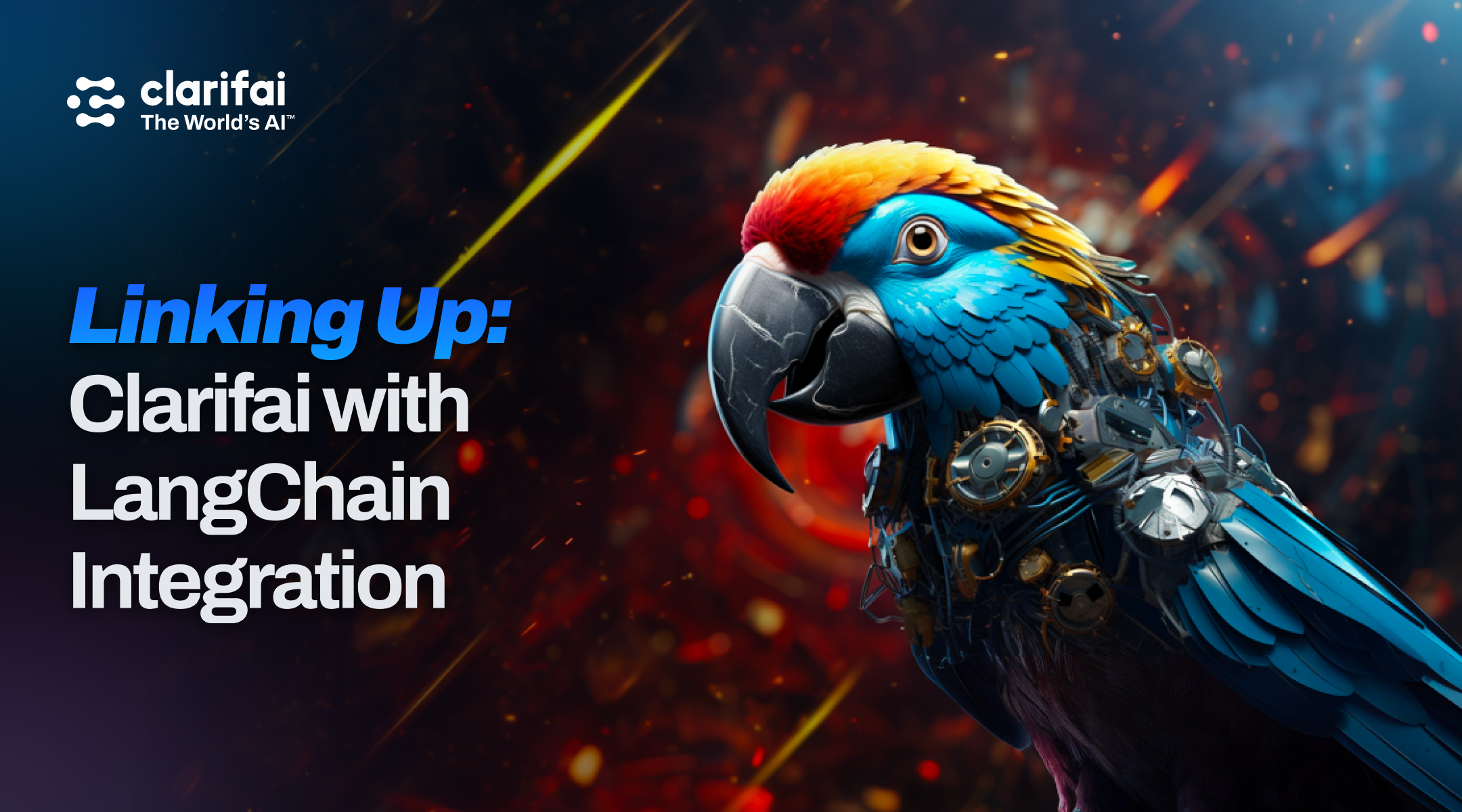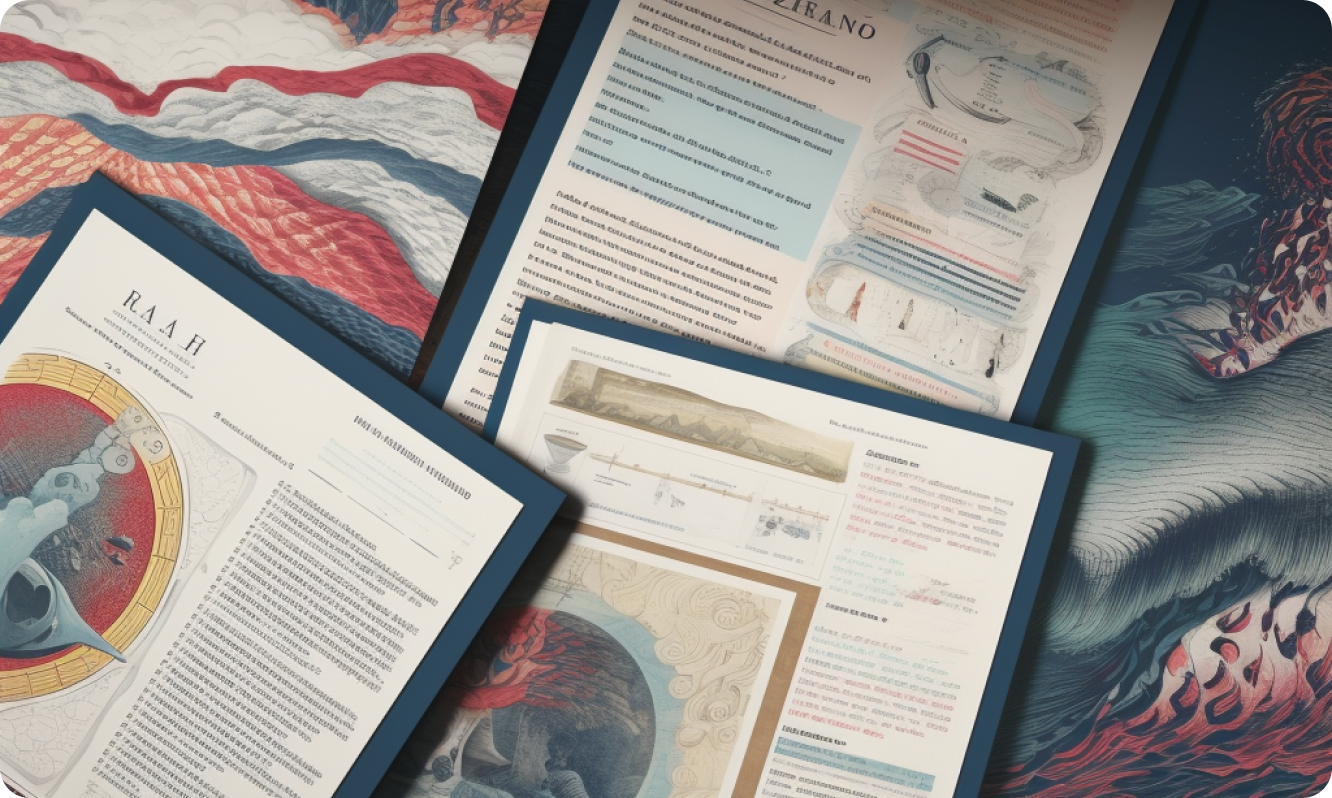
Large Language Models (LLMs) substantially gained their recognition following OpenAI's GPT-3's launch back in 2020, and since then, they have been firmly on a trajectory of popularity and technological growth. However, in 2022, this upward momentum saw an impressive surge, thanks to significant advancements in the LLM domain, such as the release of Google's "sentient" LaMDA chatbot, OpenAI’s next-gen text embedding model, and OpenAI's "GPT-3.5" models. Amid these progresses, OpenAI launched ChatGPT, which pushed LLM technology fully into the limelight. Around the same time, LangChain, a cutting-edge library aiming to facilitate developments around LLMs, was introduced by Harrison Chase.
Clarifai has integrated LangChain natively into its framework. Let's explore the potential of this integration by understanding more about LangChain, its features, and how creating applications in this ecosystem works.
LangChain: The Connection to High-Performing NLP Applications
Harrison Chase and Ankush Gola developed LangChain as an open-source framework in 2022. Designed for AI and machine learning developers, the library enables the combination of LLMs with other external components to create high-performance NLP applications. LangChain's primary goal is to link potent LLMs, such as OpenAI's GPT-3.5 and GPT-4, with various external data sources, thus enabling the production and utilization of superior NLP-based applications.
LangChain has emerged as an essential tool for developers, allowing for the streamlining of complex processes involved in creating generative AI application interfaces. LLMs typically require access to massive volumes of data; LangChain simplifies this with efficient data organization, retrieval, and interaction with models. Moreover, the tool allows AI models to remain current by connecting them with up-to-date data, despite their official training data being relatively dated.
The way LangChain solves this problem is with the concept of LLM chains. These chains introduce a consolidated means of information processing and response generation. Supplementing this with document retrieval strategies can substantially decrease hallucination while enabling fact verification, bringing an additional reliability facet to the generated outputs. We’ll discuss the ideas of stuffing, map-reduce, and refinement chains and their potential to boost language model-based applications.
Exploring LLM Chains: Unifying Language Models
LLM chains operate via a sequence of interconnected components that collectively process user input and craft responses. The following steps outline their basic workings:
- User Input: The user input, whether in the shape of a question or command, kick-starts the LLM chain and serves as the preliminary prompt.
- Integration with Prompt Template: An integral part of the LLM chain is the prompt template. The chain employs this to format user input into a structure that the LLM can decipher, thus offering a consistent mold for presenting the prompt.
- Formatting and Preprocessing: After prompt template application, the chain runs further transformations to refine the input for subsequent LLM processing. These improvements may include tasks such as tokenization or normalization.
- Processing via Language Model: The prompt, post-formatting, and preprocessing are forwarded to the LLM component of the chain. This potent language model, skilled in generating human-like text, processes the input and crafts a response.
- Output Integration: Depending on the needs of the application, the response that the LLM generates at this stage serves as the chain's output.
- Chained Component Interaction: Additional components can be included within LLM chains. For instance, chains like Stuffing, Map-Reduce, and Refine interact with gathered documents or past outputs at each stage for refining and amplifying the final result. This component chaining aids in detailed and dynamic information processing.
- Execution (Iterative or Sequential): Depending on the application needs, LLM chains can execute in an iterative or sequential manner. Iterative execution allows the output of one loop to serve as the input for the next, enabling progressive augmentation. Sequential execution, however, works linearly, with each module running one after the other.

Stuffing Chain
When you have too much information to be used in the context of an LLM, the stuffing chain is one solution. It divides larger documents into smaller parts and uses semantic search techniques to extract relevant documents based on the query, which are then “stuffed” into the LLM context for response generation.
Pros: The stuffing chain allows incorporating multiple relevant documents, which is a way of choosing only the information you need so that you don’t surpass the context limits of the LLM. By leveraging multiple documents, the chain can formulate comprehensive and pertinent responses.
Cons: Extracting relevant documents demands a robust semantic search and vector database, which can add a lot of complexity in its own right. Moreover, since multiple documents are retrieved, the LLM might lack all the coherent context to generate a meaningful answer because it might not find everything, or it may not all fit.
When you should use it: The chain can be great for pulling answers from large documents by using extracted document chunks. It offers comprehensive and accurate responses to complex questions that need information from varied sources. You may have even done this yourself when using an LLM by pasting chunks of data into the input and then writing a prompt asking to use that information to answer a question.

Map-Reduce Chain:
This chain is helpful for tasks that require parallel document processing, then combining the outputs to deliver the final result. Think of compiling multiple reviews to get a holistic perspective on a product.
Pros: The chain allows for parallel language model execution on individual documents, hence improving efficiency while cutting down processing time. Moreover, it's scalable and can extract specific document information, contributing to a rounded final result.
Cons: Output aggregation requires meticulous handling to maintain coherence and keep things accurate. Individual outputs of the Map-Reduce chain might contain repetitive information, necessitating further processing. As in the product review example, multiple people could have written the same things.
When you should use it: The chain can be employed to generate summaries for multiple documents, which can then be combined to give a final summary. It performs well in cases that require complex scientific data answers by dividing relevant papers into smaller chunks and synthesizing the required information.

Refine Chain:
This chain focuses on iterative output refinement by feeding the last iteration output into the next, which magnifies the accuracy and quality of the final result. You might have done this yourself when generating text, then provided the text back to the LLM and asked for a change in style.
Pros: The chain allows for gradual refinement of the output by iteratively curating and enhancing the information. Such refinement gives rise to greater accuracy and relevancy in the final result.
Cons: The chain's iterative nature could require more computational resources compared to non-iterative approaches and might also lengthen the processing time.
When you should use it: The chain is great for extensive text compositions like essays, articles, or stories where iterative refinement boosts coherence and readability. It is essential when the retrieved documents provide context for the answer-generation process.
LangChain's Features and Integrations: A Holistic Approach
Chains aren’t LangChain's only functionality; it provides several other modules as well, including model interaction, data retrieval, agents, and memory. Each offers unique capabilities to developers, contributing to an efficient tool for creating NLP applications.
Integrations are a critical aspect of LangChain. By integrating LLM providers and external data sources, LangChain can create sophisticated applications like chatbots or QA systems. For instance, LLMs such as those from Hugging Face, Cohere, and OpenAI can be synergized with data stores like Apify Actors, Google Search, or Wikipedia. Cloud storage platforms and vector databases are also examples of possible integrations.
Developing Applications with LangChain
Creating an LLM-powered application with LangChain typically involves defining the application and its use case, building functionality using prompts, customizing functionality to suit specific needs, fine-tuning the chosen LLM, data cleansing, and consistent application testing.
In LangChain, prompts are key to instructing LLMs to generate responses to queries. LangChain implementation allows easy generation of prompts using a template. To create a prompt in Python using the pre-existing LangChain prompt template, developers only need to import the prompt template and specify the necessary variables. For example, interacting with OpenAI's API would only require a few steps, including acquiring the API access key, implementing it within the Python script, and creating a prompt for the LLM.
LangChain and the Clarifai Integration: Chain-ging the Game
With this native integration of LangChain into Clarifai's ecosystem, both developers and end-users stand to greatly benefit. It opens new realms for LangChain applications, such as customer service chatbots, coding assistants, healthcare, and e-commerce solutions, all enhanced by state-of-the-art NLP technologies.
From deploying sophisticated chatbots capable of elaborate conversations to building advanced coding tools, LangChain is proving its mettle in various domains. The healthcare sector can reap the benefits of LangChain by automating several repetitive processes, thus allowing professionals to concentrate better on their work. In the realm of marketing and e-commerce, NLP functionality can be used to understand consumer patterns, enhancing customer engagement.
NLP's advantages, particularly in terms of Natural Language Understanding (NLU) and Natural Language Generation (NLG), essentially underscore the importance of LangChain. Clarifai's decision to integrate with LangChain promises a new phase for how AI and LLMs are leveraged, greatly benefiting individuals and businesses alike.
For more information, see LangChain’s documentation pages, which detail how to use it with Clarifai:
https://python.langchain.com/docs/integrations/providers/clarifai
https://python.langchain.com/docs/integrations/llms/clarifai
https://python.langchain.com/docs/integrations/text_embedding/clarifai







